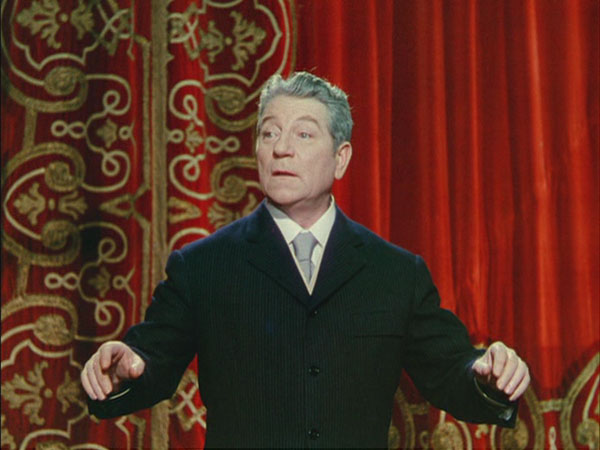It took me two or three years to finally watch The Golden Coach and then I loved it to pieces, so anticipation was unreasonably high for this one. At first it’s just another Renoir movie, light and magnificent even when being grim and serious, but as the plot threads started to mirror those of The Golden Coach (woman deciding between three lovers) it built to a similarly wonderful ending. So no, not up to Golden Coach standards, but close!
Jean Gabin:

This was Renoir’s big return to France, his first French movie since the distrastrously received Rules of the Game, so he made a nationalistic crowd-pleaser with lots of dancing girls, just to be safe. In the late 1800’s, Jean Gabin (fresh off Touchez pas au grisbi) is having financial trouble with his high-class variety theater, decides to buy a new place and revive the low-class can-can dance as a popular middle-class spectacle. Calls it the Moulin Rouge, ho ho. Recruits and trains non-dancers including washwoman Nini and gathers old favorite companions including hot-tempered star dancer (and part-time girlfriend) Lola, famous whistler Roberto, and singing assistant Casimir, and gains financial assistance from a visiting prince.
Trouble: Nini is fooling around with Gabin, also has longtime boyfriend Paolo, and is also being courted by the prince. Paolo tells her it’s over if she dances the cancan in public, and she breaks up with the prince (leading to his suicide attempt), so she tries to stick with Gabin, under the condition that he see no other girl but her. His reaction:

So now, boyfriendless, she throws herself joyously into the dance, choosing art over a steady love life, the same ending as The Golden Coach but in exhuberant dance instead of a solemn speech. Wonderful! Can’t believe Katy didn’t want to watch this back when I kept suggesting it in the apartment. Anyway, I’ll gladly watch again when she changes her mind.
Color and sound and costumes are all brilliant. Acting is usually great, and when it’s not, Renoir keeps things moving fast enough that you can’t tell. I was surprised when Gabin wakes up in bed with Lola – I’d forgotten that you could do that in 1950’s Europe. His scene at the end is great, sitting backstage tapping his foot, imagining the action on stage, knowing all the steps and smiling without having to see. The Criterion essay (or did I read it somewhere else?) points out that this scene lets us know that he choreographed the dance and practiced it with the girls over and over without showing us the actual practices… very effective.
Françoise Arnoul (Nini) had previously appeared in Antonioni’s “I Vinti”, is still acting today

MarÃa Félix (jealous Lola) was a huge star in Mexico. Giani Esposito (the prince) starred six years later in Rivette’s Paris nous appartient.

Franco Pastorino (Paolo) died a few years later, only appearing in one more film.

This is the earliest Michel Piccoli appearance I’m likely to see (his earlier films are quite obscure). That’s him in the blue.

Cameo by Edith Piaf:
